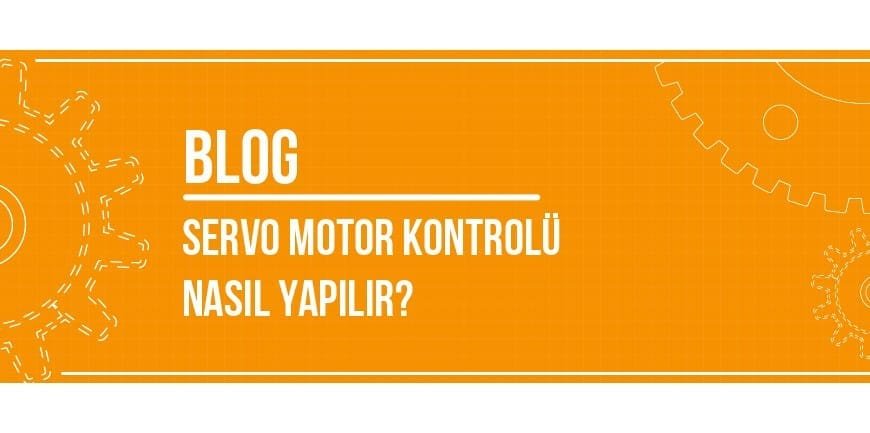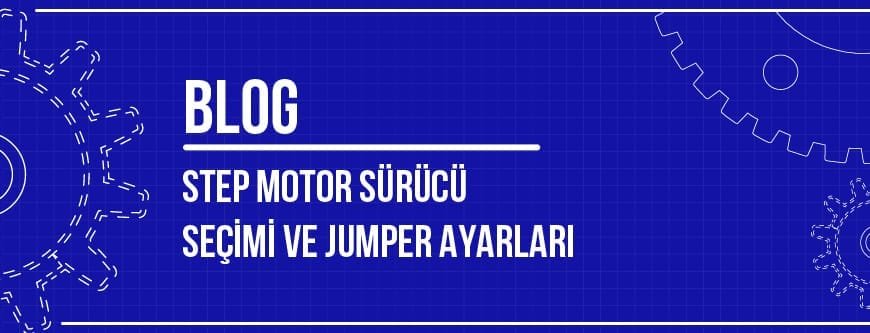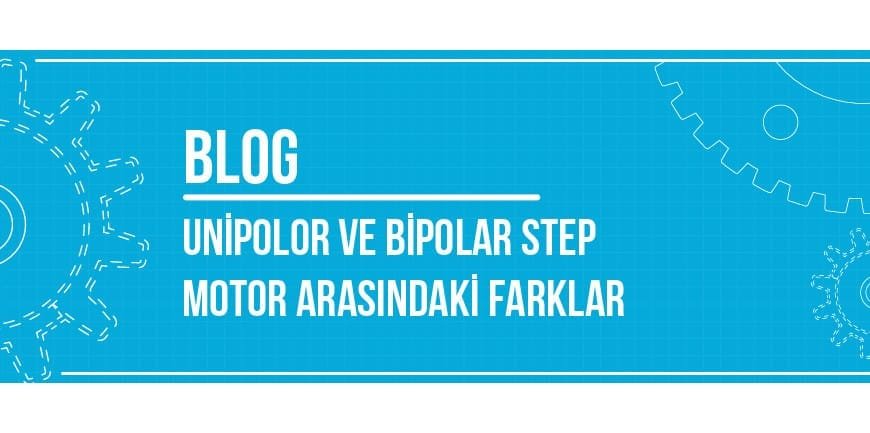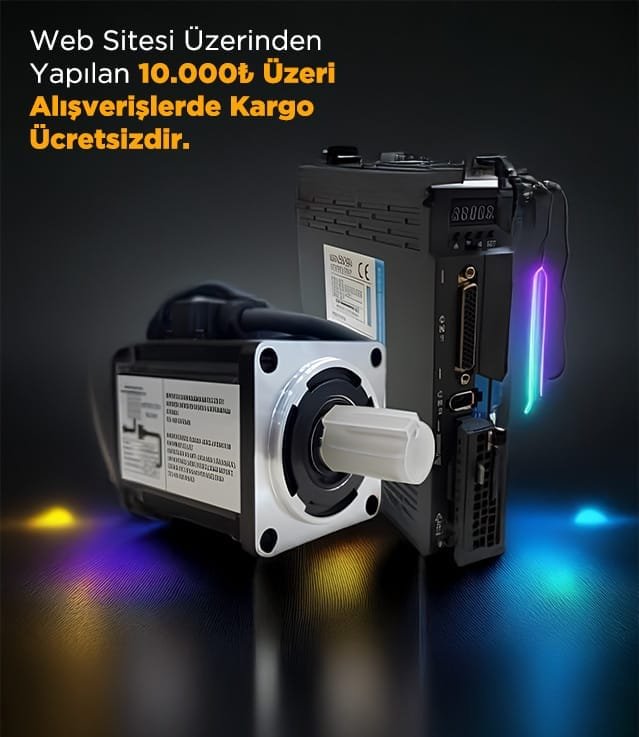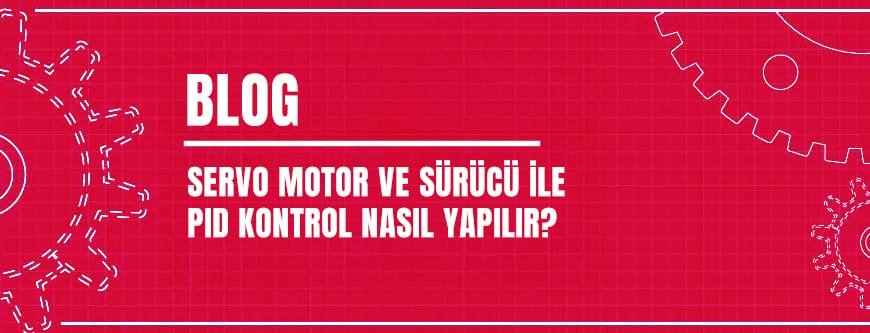
İçindekiler
How to PID Control with Servo Motor and Driver?
Servo motors and servo motor drives are widely used in industrial automation and precision control systems. PID (Proportional-Integral-Derivative) control algorithm is often preferred for the most efficient operation of these systems. PID control provides precise operation by optimizing parameters such as speed, position and torque of servo motors.
In this article, we will examine in detail what PID control is, why it should be used with servo motors and how it can be successfully applied in different application areas.
What is PID?
PID (Proportional-Integral-Derivative) control is a mathematical algorithm that ensures that a system remains constant at a specified target value (output). The main purpose of PID control is to minimize the errors in the input signal to ensure stable and smooth operation of the system.
This algorithm calculates based on three different components: the instantaneous error (current error), the error history and the error rate of change. The terms P, I and D, each with a certain coefficient, are used to increase the precision of the system and minimize errors.
PID Control and Servo Motors
Servo motors have a wide range of applications from industrial machines to robotic systems. When PID control is used with servo motors, motor movements become more precise and stable.
Servo motors are controlled by servo motor drives, which apply the PID algorithm to transmit the necessary signals to the motor. Thanks to PID control, the position, speed and torque of the motor can be precisely adjusted.
Why Servo Control is Important?
Servo motors play critical roles in industrial and robotic systems, creating the need for precise control. Servo control provides energy efficiency and system stability by optimizing motor movements.
Servo control with the PID algorithm prevents sudden fluctuations and guarantees a more stable operation of the system. This ensures a longer lifetime of the machine and robot systems.
What are the Main Types of Servo Control Techniques?
The main control techniques used with servo motors include PID control, adaptive control and fuzzy logic control. The most common of these is PID control.
While adaptive control allows the system to adapt to time-varying conditions, fuzzy logic control offers effective solutions in systems with high uncertainty.
Servo Motor Control with PID
The PID control algorithm can be used to optimize different parameters of servo motors. Factors such as the speed, position and power of the servo motor can be precisely adjusted with PID control.
For a system to operate correctly, the P, I and D coefficients need to be optimized. This optimization can be done by trial and error or by automatic PID tuning algorithms.
Servo Motor Power Control with PID
Servo motor power control with PID allows the motor to precisely reach and remain stable at a set reference value. The PID algorithm optimizes parameters such as torque and speed by adjusting the input voltage or current of the motor. This allows the servo motor to perform more stably against sudden load changes and external influences.
This method, which is widely used in industrial automation and robotic systems, increases energy efficiency by preventing the motor from overreacting. PID control analyzes the operating conditions of the motor with continuous feedback and ensures that the system reaches the desired performance by making the necessary corrections. Especially in applications that require precise positioning, the PID algorithm significantly improves the accuracy and responsiveness of the servo motor.
Servo Motor Position Control with PID
Servo motor position control with PID is a control method that relies on a feedback system to achieve a targeted position. The PID algorithm regulates the motion of the motor using proportional (P), integral (I) and derivative (D) components to minimize error. Proportional control responds instantaneously to the magnitude of the error, integral control corrects the accumulation of error over time and derivative control stabilizes the system against sudden changes.
This control method aims to achieve stable and accurate movement by precisely adjusting the position of the servo motor. It is widely used in CNC machines, robot arms and industrial automation systems. Setting the PID parameters correctly increases the response time and accuracy of the system, minimizing negative effects such as excessive oscillation or delay.
This type of control is used in many areas, from industrial robots to CNC machines.
Servo Motor Speed Control with PID
PID control is a method that provides precise and stable control in the speed management of servo motors. Servo motors must be able to react instantly to speed changes in applications requiring high accuracy. PID control allows the motor to run at the desired speed by minimizing the difference between the target speed and the current speed. Thanks to its proportional, integral and derivative components, the speed difference is intervened instantly, past error accumulation is corrected and precautions are taken against sudden speed changes. With feedback sensors such as encoders or tachometers, the speed is continuously monitored, providing data to the PID controller and sending the necessary correction signals to the motor drive.
PID parameters for speed control must be set correctly, otherwise fluctuations or delays may occur in the system. By optimizing the PID coefficients with methods such as Ziegler-Nichols or trial-and-error, the motor responds quickly and stably. PID control is widely used in CNC machines, industrial robots, handling systems and automation lines. When applied correctly, the speed fluctuations of servo motors are minimized, energy efficiency is increased and long life of the systems is ensured.
Servo Motor Temperature Control with PID
PID control is an effective method for temperature management of servo motors. Servo motors can overheat when operating in applications requiring high speed and torque, which can lead to loss of performance or shorten the life of the motor. PID control prevents overheating by keeping the temperature of the motor at a certain level. Thanks to its proportional, integral and derivative components, it reacts instantly to the temperature difference, balances the accumulation of errors over time and takes precautions against sudden changes. By providing feedback through thermal sensors, the temperature is continuously monitored and the cooling systems or the operating parameters of the motor are dynamically adjusted.
Temperature control with PID can be implemented by activating fan or liquid cooling systems, optimizing the current and voltage delivered to the motor drive. Correct PID settings ensure efficient operation of the servo motor and prevent overheating. Temperature control can be made precise by optimizing PID parameters with methods such as Ziegler-Nichols or trial-and-error. This method, which is widely used in CNC machines, robotic systems and automation lines, contributes to longer life and reliable operation of the motor.
PID Control Algorithm
The correct application of the PID control algorithm increases the efficiency of servo motor systems. Correctly determining the PID coefficients according to the needs of each system creates a precise and efficient control mechanism.
Servo motor and PID control are an indispensable duo in industrial automation systems, and maximum performance can be achieved with the right settings.
The PID control algorithm is a widely used control mechanism in feedback systems. This algorithm consists of three basic components:
- P (Proportional): Directly proportional to the error term (desired value – actual value).
- I (Integral – Integral): Calculates the accumulation of error over time and is used to reduce long-term errors.
- D (Derivative): Analyzes the rate of error change and helps to improve the system’s response to sudden changes.
PID Control Steps with Servo Motor and Driver
- Setting a Reference Value: Determine the position the servomotor should reach.
- Error Calculation: Calculate the difference between the current position and the target position.
- Setting PID Parameters: Specify the P, I and D coefficients.
- Control Signal Generation: Calculate the appropriate signal using a PID control algorithm.
- Send Signal to Drive: Transmit the calculated control signal to the servo motor drive.
- Feedback and Tuning: Optimize PID parameters as needed by monitoring the performance of the system.
PID Controller Example with Python
The following Python code contains a simple PID controller. This code can be used to ensure that the servo motor reaches a specified target.
class PIDController:
def __init__(self, kp, ki, kd):
self.kp = kp
self.ki = ki
self.kd = kd
self.previous_error = 0
self.integral = 0
def update(self, target, current):
error = target – current
self.integral += error
derivative = error – self.previous_error
output = (self.kp * error) + (self.ki * self.integral) + (self.kd * derivative)
self.previous_error = error
return output
# PID coefficients
kp = 1.2
ki = 0.15
kd = 0.02
# Create PID controller
pid_controller = PIDController(kp, ki, kd)
# Target location
target_position = 150
# Current location
current_position = 80
# Calculate control signal
control_signal = pid_controller.update(target_position, current_position)
# Simulation of sending the control signal to the servo motor drive
print(“Kontrol Sinyali:”, control_signal)
This code generates the appropriate control signal for the servo motor to reach the specified target using PID control logic. Precise control can be achieved by adjusting the PID coefficients according to system requirements.
PID control with servo motor and servo motor drive provides high precision, reliability and efficiency in industrial automation systems. Thanks to the PID algorithm, motor movements become smoother and more controlled, the margin of error in the system is minimized, resulting in less energy consumption. This means lower costs in production processes, increased efficiency and longer-lasting equipment. Accurate tuning of the servo motor and drive makes it possible to achieve superior performance, especially in sensitive and critical applications.
Diğer Blog Yazılarımız



